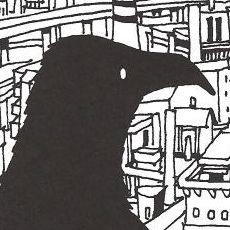Tag: science fiction
-
I'll ruin you because I love you
/
/ ReviewsRead More →: I'll ruin you because I love youEpisode four of Casshern Sins; an animated, beautiful contradiction. Perfectly flawed, just the way I like it.
-
Actually, Blassreiter is quite good
/
/ ReviewsRead More →: Actually, Blassreiter is quite goodWhen Blassreiter started airing in April, I suppose I wasn’t the only one to ignore it, but why is that? Wait, isn’t it obvious? Just two damn words are all it takes. Studio Gonzo. In recent years, despite the odd exception, their name has become synonymous with bland, conventional, boring anime. Hence, somewhat unfairly, I…
-
A romantic interpretation of Kaiba
Read More →: A romantic interpretation of KaibaI was always going to like Kaiba. Even before it started airing, I had, somewhat dangerously, convinced myself that it would be good. After all, with someone like Masaaki Yuasa directing, I had to expect it would special and well, some five months later, here we are again, I just finished Kaiba this weekend. Lets…
-
Bokurano: … I really wish I could've died on the Earth I grew up on.
/
/ ReviewsRead More →: Bokurano: … I really wish I could've died on the Earth I grew up on.I finished Bokurano this weekend, just as planned. 24 episodes in 5 days isn’t bad at all, as I’ve never been one to enjoy marathoning through anime. After all, I ended up needing nearly 2 whole years to catch up with 300+ episodes of One Piece, so, starting and finishing Bokurano in a matter of…
-
The meaning of life, according to Ghost Hound
/
/ ReviewsRead More →: The meaning of life, according to Ghost HoundThe suggestion that there might be a level of consciousness beyond the physical realm has fascinated people for thousands of years. Are we tied to these bodies forever, or, could this vague concept of “we” be a mere illusion; a solid container that our ‘ego’ is ready to transcend at any given moment? Science has…
-
First impressions of Kaiba: big surprise, I loved it
/
/ ReviewsRead More →: First impressions of Kaiba: big surprise, I loved itApologies, I know things have been quiet around here of late. While everyone gets so excited about all this new anime airing in Japan, I just get tired of it. There’s too much to watch, too much to read and too much to say. It tires me out just thinking about it, so, despite having…
-
Lohengramm's advantage; contrasting dictatorship and democracy
/
Read More →: Lohengramm's advantage; contrasting dictatorship and democracyThough Legend of the Galactic Heroes might seem like a Death Note style dual of fates fought between two talented leaders (Reinhard von Lohengramm of the Galactic Empire and Yang Wen-li of the Free Planets Alliance respectively) it is what they represent, as much as who they are and what they believe, which is just…
-
The light of dawn always comes right after the deepest darkness
/
/ ReviewsRead More →: The light of dawn always comes right after the deepest darknessWriting an anime blog is frustrating. Either through lack of time or energy, I just haven’t felt the inclination to set aside an afternoon to write about something. I guess that’s more a reflection on my recent viewing habits than anything else, because since finishing with February’s Ookiku Furikabutte, I’ve not been able to immerse…
-
Blame! Adventure-seeker Killy's Cyber Dungeon animated
/
Read More →: Blame! Adventure-seeker Killy's Cyber Dungeon animatedIf there’s one genre I’m always likely to love, it’s dark, heavy science fiction. As attested by the bitterly disappointing Ergo Proxy and Oshii’s philosophically-loaded Innocence, it’s a subset of anime that’s prone to artistic pretension of the highest order, but even still, when it works, as in the case of the viscerally despondent Texhnolyze,…
-
Musical memories of Gurren Lagann, recalling a whimsical dystopia
/
Read More →: Musical memories of Gurren Lagann, recalling a whimsical dystopiaNot sure how I missed this, but the full soundtrack for Tengen Toppa Gurren Lagann was released recently; that’s 51 tracks of epic, exciting, heavenly music, and even better, it contains the one song I’ve be longing to hear since late-July. I’m talking about track 13 on Disc no.2; the translated title is “The Days…
